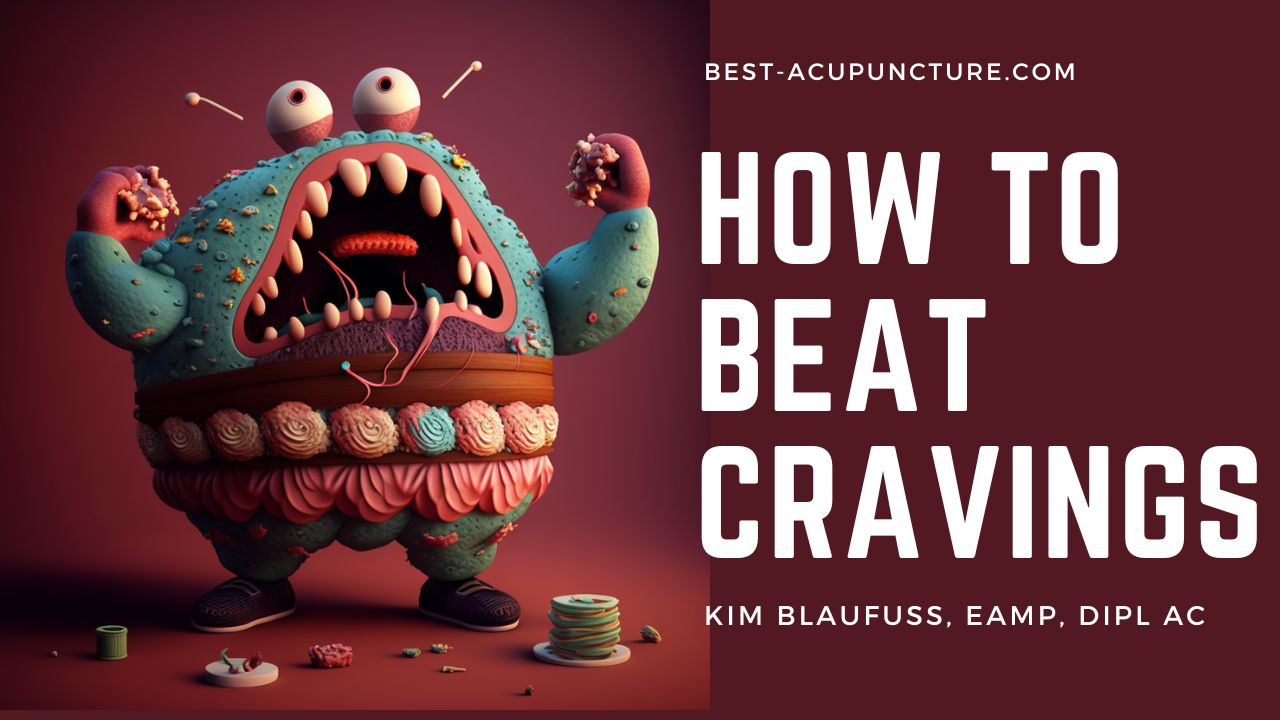Food cravings can be a real pain. They make it tough for you to stick to a healthy diet and can throw a wrench into your best-laid plans for eating well. When you give in to cravings, you often end up eating foods that are high in calories and not so great for your body. That can impact your gut health. And before you know it, you’ve overindulged, and your efforts to maintain a healthy lifestyle have gone out the window. But it’s not just your physical health that takes a hit, cravings can also mess with your mental and emotional well-being, especially if they lead to binge eating and feelings of guilt. So yeah, cravings can definitely be a problem, but the good news is, with the right strategies, you can learn to manage them and stay on track.
WHAT CAUSES FOOD CRAVINGS
Food cravings aren’t just about hunger, there’s often a lot more going on in your head too. Psychological factors can play a big role in why you crave certain foods. For example, if you associate a certain food with a happy memory or comfort, you might crave it when you’re feeling down. Or maybe you use food as a reward for a hard day at work or to cope with stress, which can lead to cravings. Your emotions and habits can also have an impact, like if you always have a sweet treat after dinner or if you crave junk food when you’re bored. Understanding these psychological factors behind your cravings can be really helpful in learning how to manage them and make healthier choices.
 It’s not just your mind that drives food cravings. Your body plays a role too. Certain biological factors can make you crave certain foods. For example, your hormones can impact your hunger levels and food preferences. Low serotonin levels, a neurotransmitter, can make you crave carbohydrates, while low dopamine levels can lead to cravings for sugar and fat. Your genes can also influence your cravings, as some people may be genetically predisposed to crave certain types of food. And let’s not forget about blood sugar levels, if they drop too low, it can trigger cravings for high-carb and sugary foods. Even food sensitivities can create cravings. You can click here to learn more about food sensitivities. Understanding these biological factors behind your cravings can help you make more informed choices and develop strategies to manage them.
It’s not just your mind that drives food cravings. Your body plays a role too. Certain biological factors can make you crave certain foods. For example, your hormones can impact your hunger levels and food preferences. Low serotonin levels, a neurotransmitter, can make you crave carbohydrates, while low dopamine levels can lead to cravings for sugar and fat. Your genes can also influence your cravings, as some people may be genetically predisposed to crave certain types of food. And let’s not forget about blood sugar levels, if they drop too low, it can trigger cravings for high-carb and sugary foods. Even food sensitivities can create cravings. You can click here to learn more about food sensitivities. Understanding these biological factors behind your cravings can help you make more informed choices and develop strategies to manage them.
Food cravings can be triggered by a variety of factors, both internal and external. Some common internal triggers include hormonal imbalances, changes in hunger levels, and low blood sugar levels. Emotions, such as stress, boredom, and anxiety, can also trigger food cravings. External triggers may include seeing, smelling, or even thinking about a certain food, as well as habits and routines, such as having a sweet treat after dinner or indulging in junk food while watching TV. Certain environmental factors, such as being around friends who are eating, can also trigger cravings. Understanding and identifying the triggers that lead to food cravings is an important step in developing strategies to manage them.
MINDFUL EATING TECHNIQUES TO BEAT FOOD CRAVINGS
Mindful eating is a technique that involves paying attention to the experience of eating, from the moment you start preparing your food to the moment you finish. It’s about being present in the moment and fully engaging with the act of eating, rather than eating mindlessly while distracted by other things. The goal of mindful eating is to increase awareness of physical hunger and fullness cues, and to help you make more mindful and intentional food choices. There are several techniques you can use to practice mindful eating:
 Eat without distractions: Try to avoid eating while watching TV, reading, or working. Focus solely on the act of eating and enjoy your food.
Eat without distractions: Try to avoid eating while watching TV, reading, or working. Focus solely on the act of eating and enjoy your food.- Savor each bite: Pay attention to the flavors, textures, and smells of your food. Chew your food slowly and enjoy each bite.
- Pay attention to hunger and fullness cues: Before eating, check in with yourself and determine how hungry you are. During the meal, tune in to your body’s signals of fullness and stop eating when you feel satisfied.
- Avoid eating on the go: Take your time to sit down and enjoy your meal, rather than eating on the run.
- Avoid multitasking while eating: Don’t try to eat while doing something else, like working or scrolling through your phone.
- Use all your senses: Take time to look at the color and presentation of your food, smell it, and taste it fully.
THE BENEFITS OF MINDFUL EATING ON GUT HEALTH
By practicing these techniques, you can develop a more mindful relationship with food and make more intentional, mindful choices that support your overall well-being and gut health.
These techniques can help you pay attention to the flavors, textures, and smells of your food, as well as your body’s signals of hunger and fullness. This can help you eat more slowly, savor your food, and make more mindful choices that support your overall well-being. Mindful eating can also be a useful tool for managing cravings and reducing overeating.
And when you start practicing a more conscious way of eating you can have a significant impact on reducing food cravings. When you pay attention to your food, your body, and your hunger and fullness cues, you become more in tune with what you need, when you need it. By eating slowly and savoring each bite, you’ll also be more likely to feel satisfied and less likely to overeat or experience cravings.
 Becoming more aware of the moment with food can let you recognize the emotional and psychological triggers that lead to cravings, and give you the tools to deal with them in a more mindful and intentional way. This awareness opens up the opportunity to identify triggers and develop strategies to manage them rather than simply giving in to cravings and overeating.
Becoming more aware of the moment with food can let you recognize the emotional and psychological triggers that lead to cravings, and give you the tools to deal with them in a more mindful and intentional way. This awareness opens up the opportunity to identify triggers and develop strategies to manage them rather than simply giving in to cravings and overeating.
Becoming more mindful of your eating has the added benefit of being more supportive of environment conservation. By reducing your food cravings, you could reduce your consumption of highly processed GMO-based foods. Small changes like this spread over 7 billion people on the planet can reduce the carbon footprint and the environmental impact of agriculture. Reducing food waste by only taking what you need and eating everything on your plate can also have a positive impact on the environment by decreasing the resources used to produce and transport food.
In the end, practicing mindful eating can help you make more mindful food choices that support your overall health and well-being, rather than relying on unhealthy, processed foods to satisfy cravings. By making more intentional food choices, you can improve your overall diet, feel more satisfied and energetic, experience fewer cravings, and help the environment.
FOR BEST RESULTS, CREATE A PLAN TO OVERCOME FOOD CRAVINGS
 To get the best results, think about creating a plan to beat food cravings because a plan helps you make intentional, mindful choices about what you eat. That change can reduce the stress and anxiety associated with cravings. Having a plan in place also promotes healthy habits and supports long-term success in managing your food choices and maintaining a healthy lifestyle.
To get the best results, think about creating a plan to beat food cravings because a plan helps you make intentional, mindful choices about what you eat. That change can reduce the stress and anxiety associated with cravings. Having a plan in place also promotes healthy habits and supports long-term success in managing your food choices and maintaining a healthy lifestyle.
Here mindful eating also provides you with a strong foundation for your plan to beat cravings. Everything you learn by practicing mindful eating can become steps in your plan. Uncovering your eating habits and patterns identifies the triggers that lead to cravings. With that information, you can develop quick-hitter strategies to manage them. Mindful eating can also help you make healthier food choices and reduce your reliance on unhealthy, processed foods to satisfy cravings.
By incorporating mindful eating into your plan, you’ll have a long-term roadmap for success and be better equipped to manage cravings, make healthier food choices, and maintain a healthy lifestyle that supports the environment. With patience, persistence, and dedication, you can learn to better manage your cravings and achieve your health goals. To get more ideas on how to incorporate patience into your health and wellness goals, here are some great ideas from the Philosophy of Taoism.
 Are you experiencing digestive issues or struggling with gut health?
Are you experiencing digestive issues or struggling with gut health?
Science has taught us space has five dimensions – length, width, height, past, and future. The five dimensions of space are the framework in physics and mathematics that define the properties of the universe. A solution that can address all five dimensions can create a comprehensive solution to your wellness.
I’ve created a five-dimensional solution. And this isn’t just based off my experience. I’ve had formal training and degrees in food, supplements, and Western science. I can help you create your physical framework for wellness.
Yet, the five dimensions include the past and future. With out these two components of time, you are missing how you got here and where you are going. My extensive training in Chinese Herbal Medicine delivers a holistic method to address and repair your past. I marry all this information with the lost art of eating to heal and Chinese Nutritional Therapy to show you how to create your future. Ready to learn more? Check out here how to holistically improve your Gut Health!

